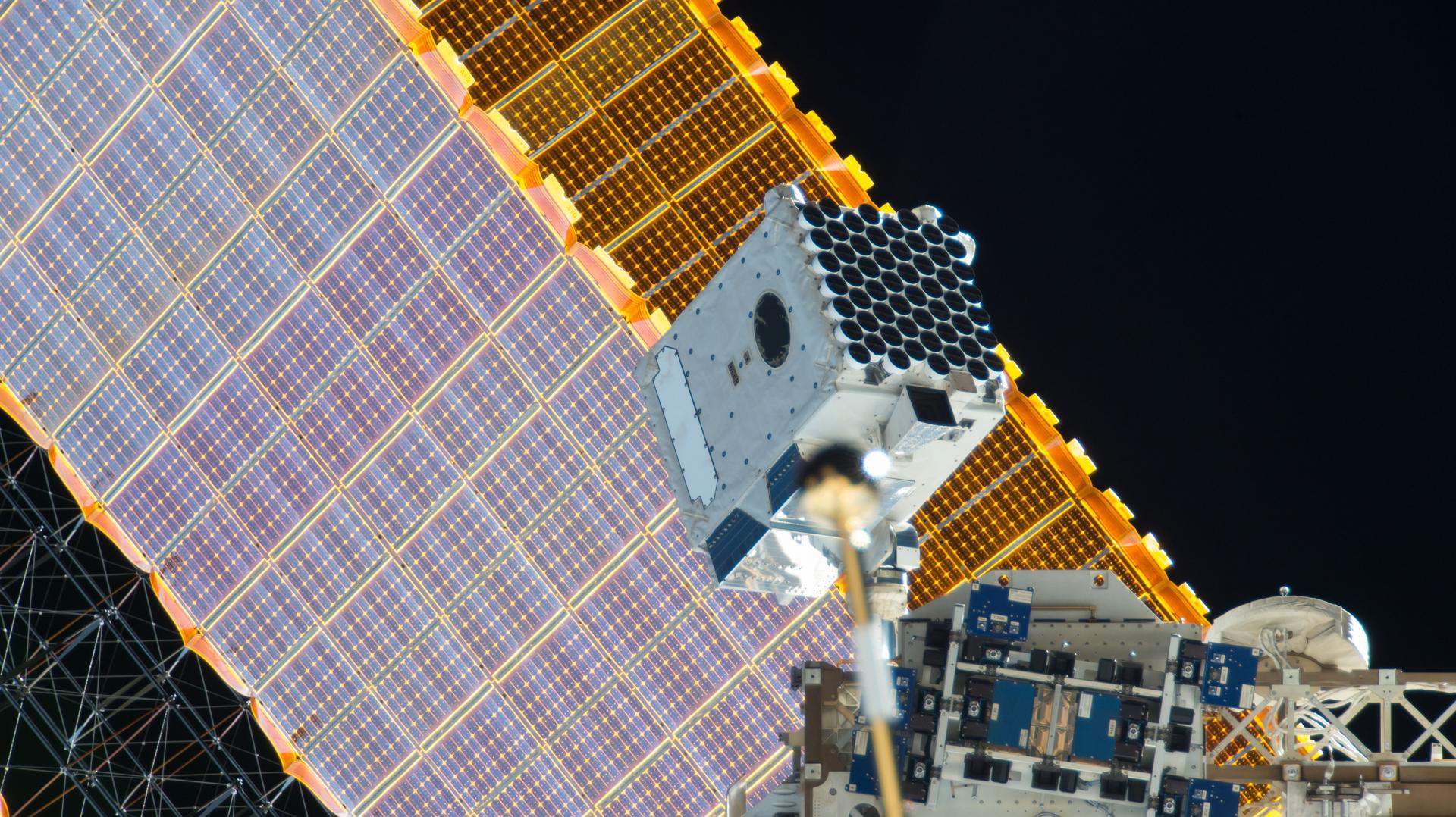
NASA's SpaceX Crew-10 Looks Back at Science Mission
NASA's SpaceX Crew-10 mission with agency astronauts Anne McClain and Nichole Ayers, JAXA (Japan Aerospace Exploration Agency) astronaut Takuya Onishi, and Roscosmos cosmonaut Kirill Peskov is preparing to return to Earth in early August after a long-duration mission aboard the International Space Station. During their stay, McClain, Ayers, and Onishi completed dozens of experiments and technology demonstrations, helping push the boundaries of scientific discovery aboard the orbiting laboratory.
Here's a look at some scientific milestones accomplished during the Crew-10 mission:
Orbital effects on plants
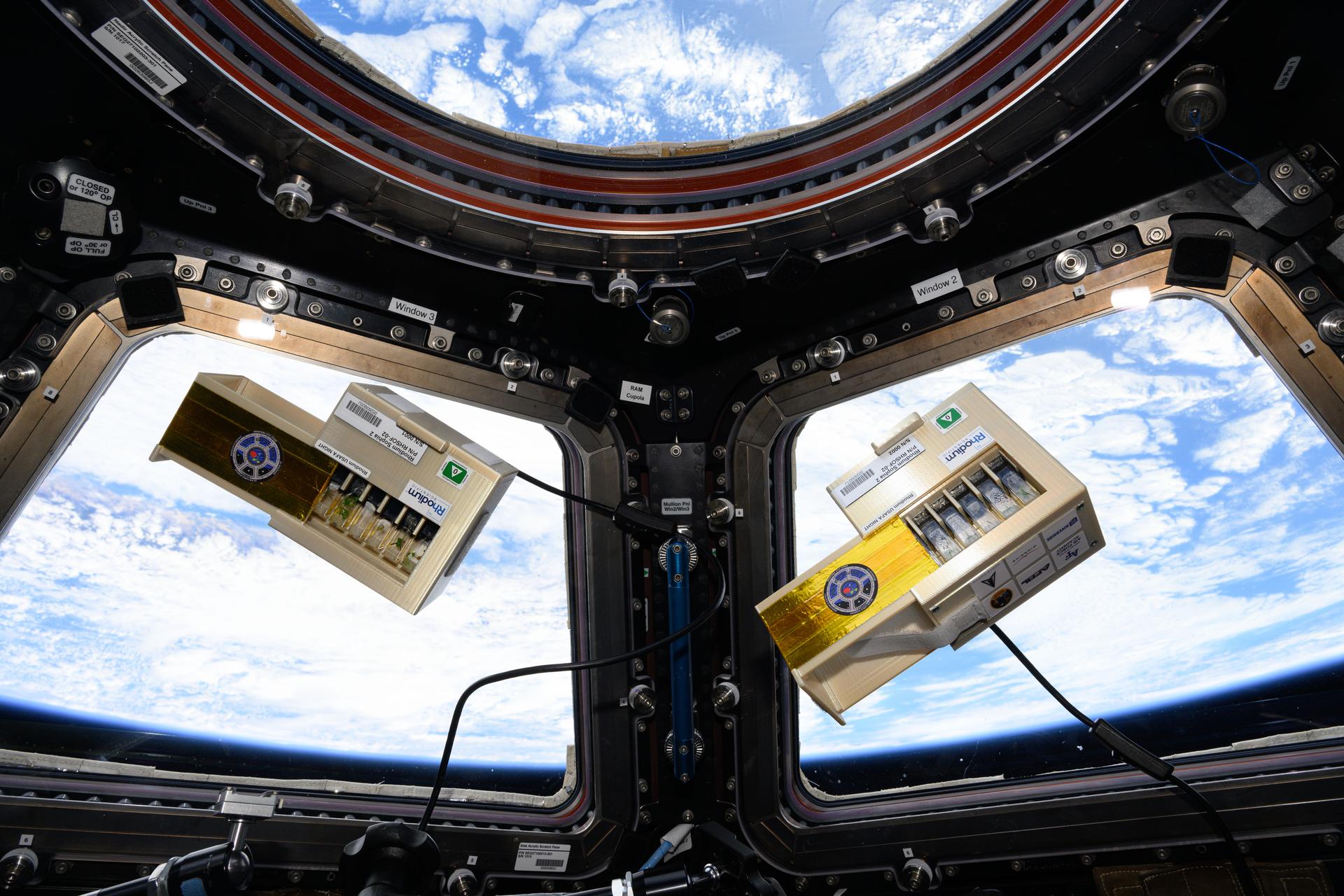
The canisters floating in the cupola of the International Space Station contain wild-type and genetically-modified thale cress plants for the Rhodium Plant LIFE experiment. The investigation studies how radiation and gravity environments at different orbital altitudes affect plant growth by comparing Crew-10 data with plants flown aboard the Polaris Dawn mission, which flew deeper into space. Studies have shown microgravity affects growth rates, and a better understanding of the mechanisms behind this could improve plant growth techniques in space and on Earth.
Solar spacewalk
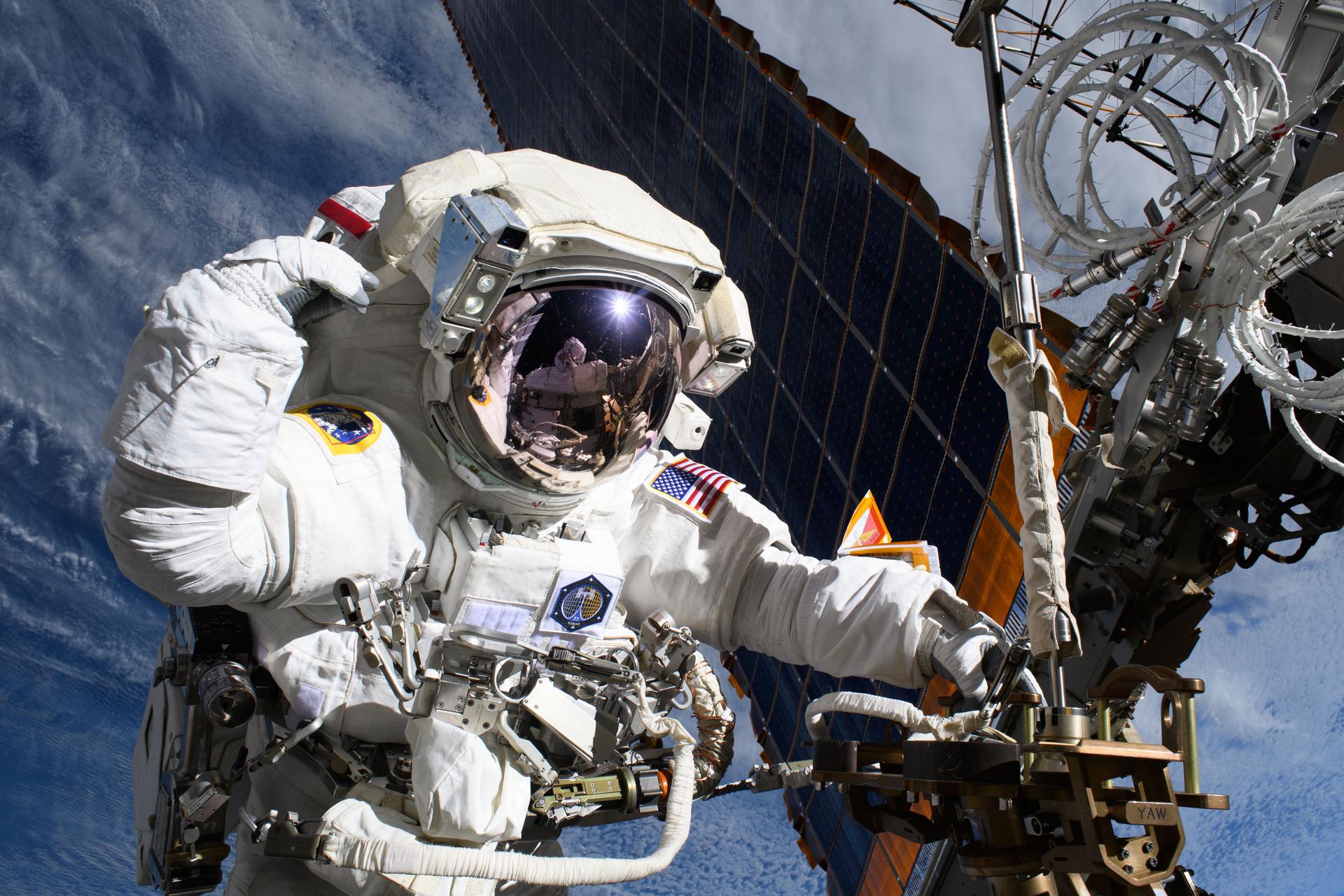
NASA astronaut Anne McClain conducts a spacewalk to upgrade the International Space Station's power generation systems, which include main solar arrays like the one visible behind her. McClain is installing hardware to support an IROSA (International Space Station Roll-Out Solar Array), a type of array that is more compact and produces more power than the station's original ones. The IROSAs were first demonstrated aboard the orbiting laboratory in June 2017, and eight have been installed to augment the power available for scientific research and other activities.
Microalgae on the menu
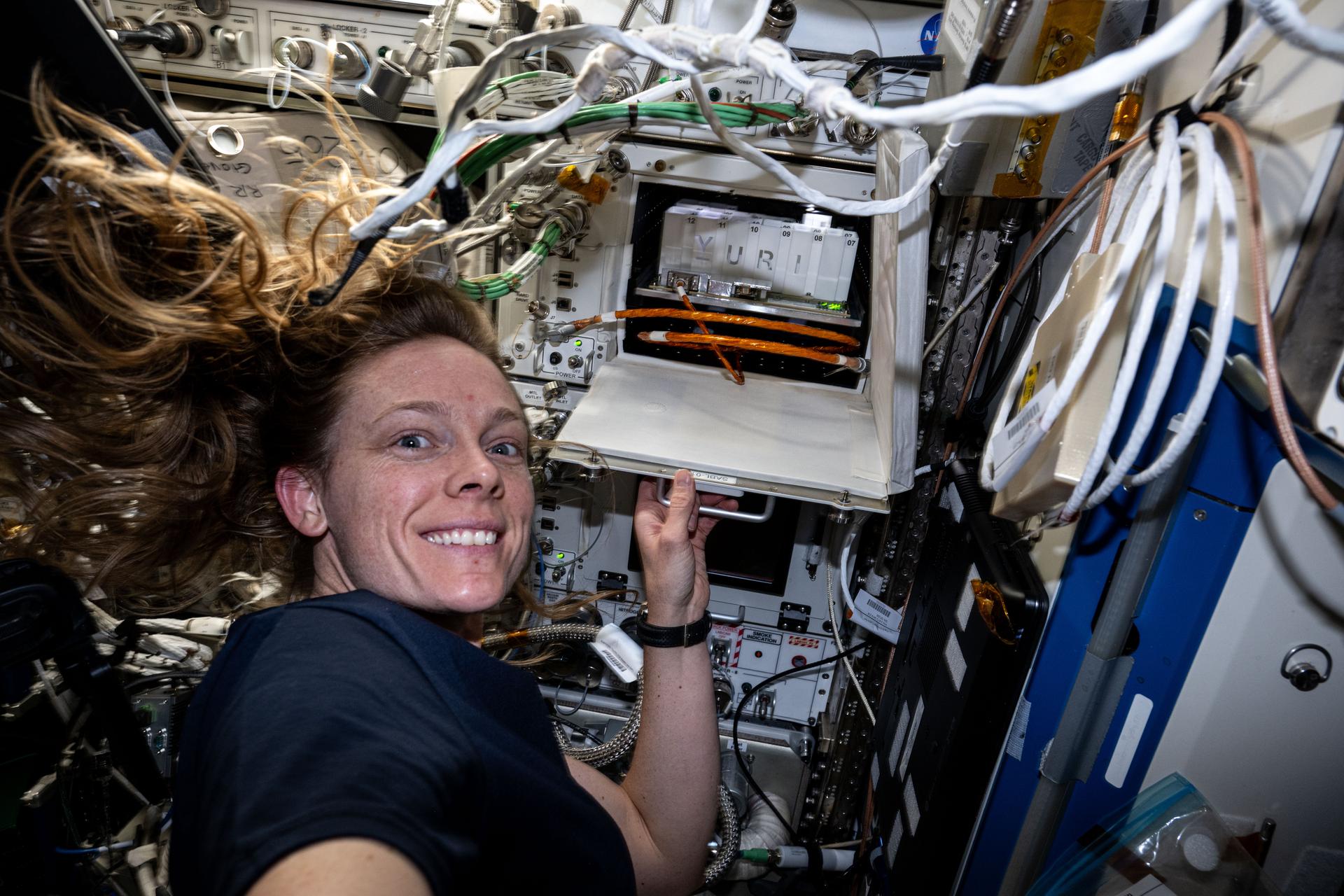
NASA astronaut Nichole Ayers uses the International Space Station's Space Automated Bioproduct Laboratory to process samples for SOPHONSTER, a study of microgravity's effects on the protein yield of microalgae. These organisms are highly nutritious, producing amino acids, fatty acids, B vitamins, iron, and fiber. The microalgae could provide sustainable meat and dairy alternatives during long-duration space missions. It also could be used to make biofuels and bioactive compounds in medicines in space and on Earth.
Looking down on lightning

The International Space Station orbits more than 250 miles above Earth, giving astronauts a unique view of their home planet, where they can photograph familiar places and interesting phenomena. While passing over a stormy night, NASA astronaut Nichole Ayers captured this image of simultaneous lightning at the top of two thunderstorms. Scientists use instruments installed on the space station to study lightning and other weather conditions in Earth's upper atmosphere. This research helps protect communication systems and aircraft while improving atmospheric models and weather predictions.
Testing the tips of DNA
In this time-lapse video, JAXA (Japan Aerospace Exploration Agency) astronaut Takuya Onishi and NASA astronaut Nichole Ayers harvest samples for the APEX-12 investigation, which examines how space radiation affects telomere activity in thale cress plants. Telomeres, which are repetitive DNA sequences that protect the ends of chromosomes, become shorter each time a cell divides and indicate cell aging. The APEX-12 investigation could clarify the role of telomeres in aging and diseases and help scientists equip plants and other organisms for the stress of long-duration spaceflight.
Microscopic motion
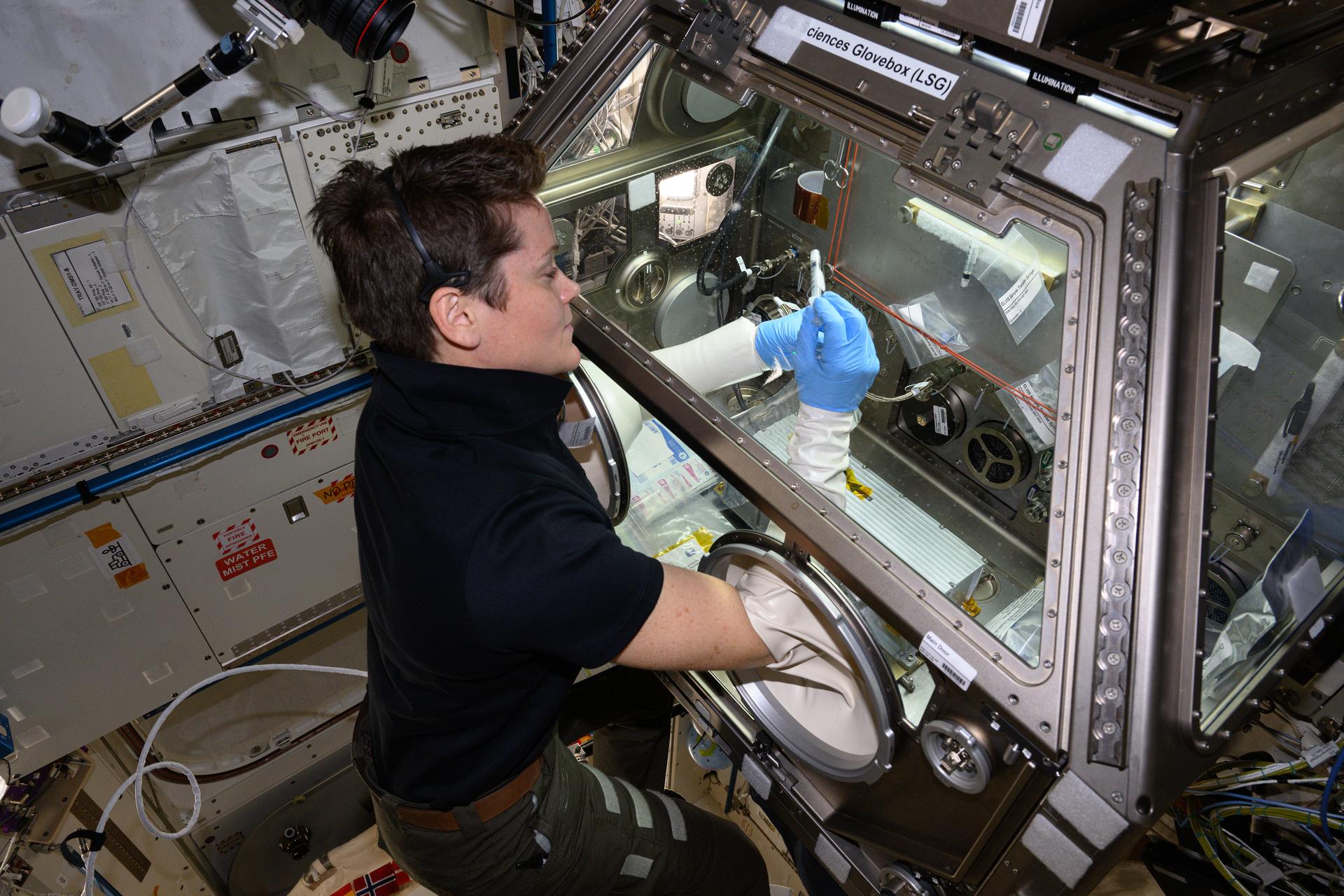
A fluorescent microscope, known as ELVIS, captures the motion of microscopic algae and bacteria in 3D, a new capability aboard the International Space Station. The technology could be helpful in various applications in space and on Earth, such as monitoring water quality and detecting potentially infectious organisms. NASA astronaut Anne McClain prepares bacterial samples for viewing with the microscope.
How cells sense gravity
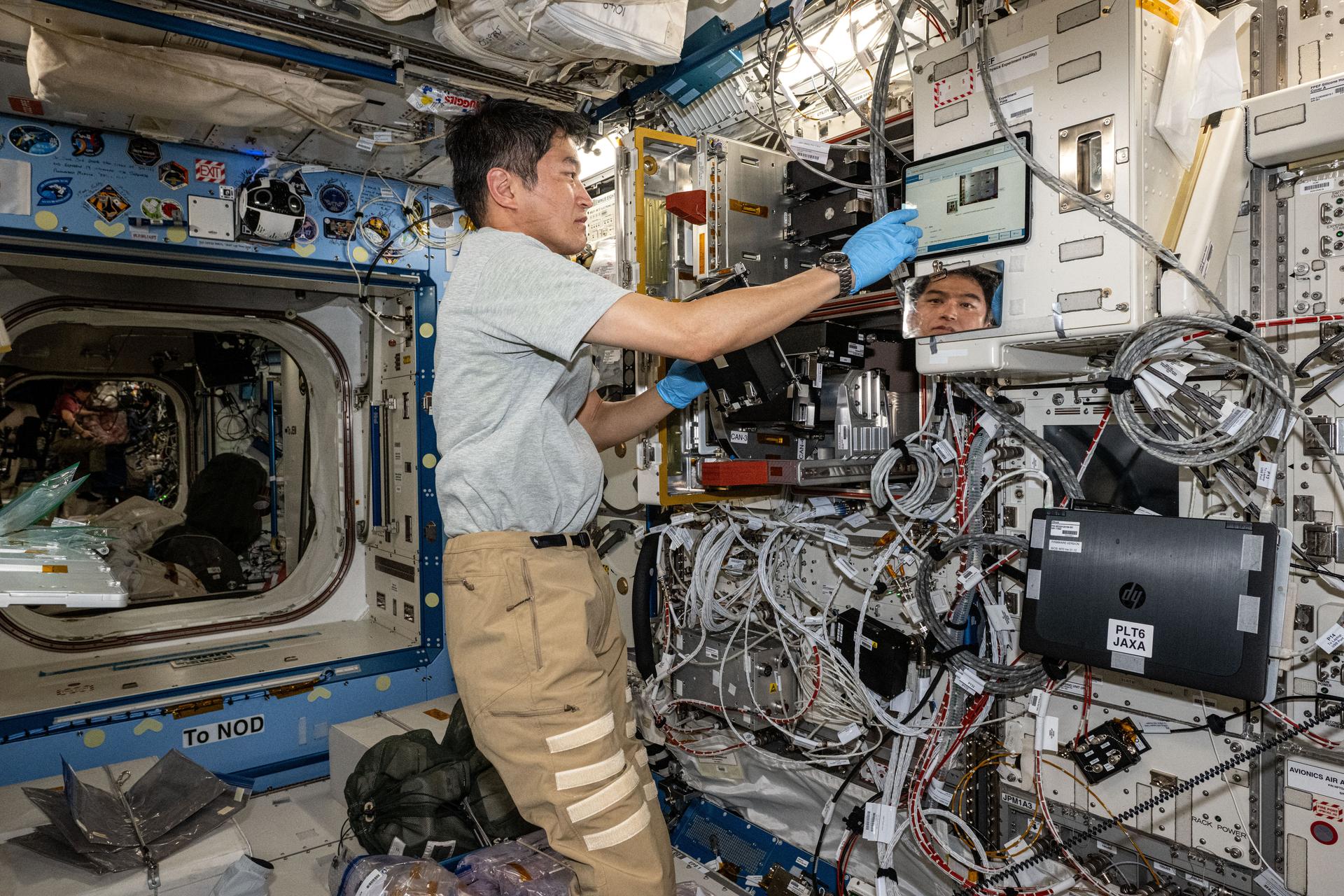
Individual cells in our bodies can respond to the effects of gravity, but how they do this is largely unknown. The Cell Gravisensing investigation is an effort to observe the mechanism that enables cells to sense gravity and could lead to therapies to treat muscle and bone conditions, like muscle atrophy during long-duration spaceflight and osteoporosis on Earth. JAXA (Japan Aerospace Exploration Agency) astronaut Takuya Onishi processes research samples in the International Space Station's Kibo laboratory module.
Water works
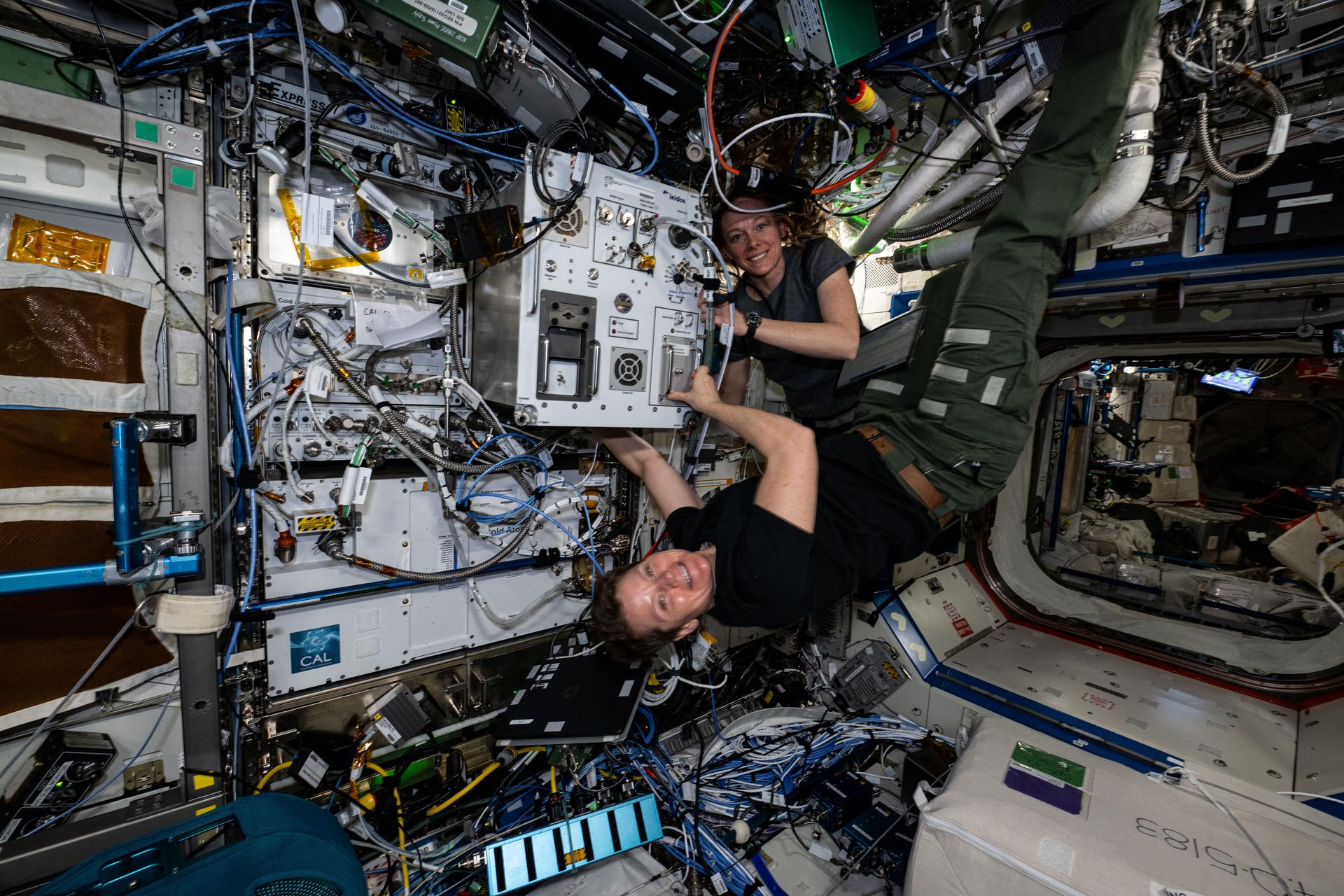
NASA astronauts Nichole Ayers and Anne McClain work on installing hardware for the International Space Station's Exploration Potable Water Dispenser. Scientists are evaluating the device's water sanitization and microbial growth reduction technology. The dispenser provides room temperature and hot water for crew consumption and food preparation. This technology could be adopted for future exploration missions.
Free-flying camera

Astronaut Takuya Onishi of JAXA (Japan Aerospace Exploration Agency) monitors the JEM Internal Ball Camera 2 as it floats through the International Space Station. The free-flying, rechargeable camera provides a visual field outside the other cameras installed aboard the space station. JAXA is testing the robot's ability to capture video and imagery of scientific experiments and other activities, which could free up crew time for research and other duties.
Two rings to pin them all
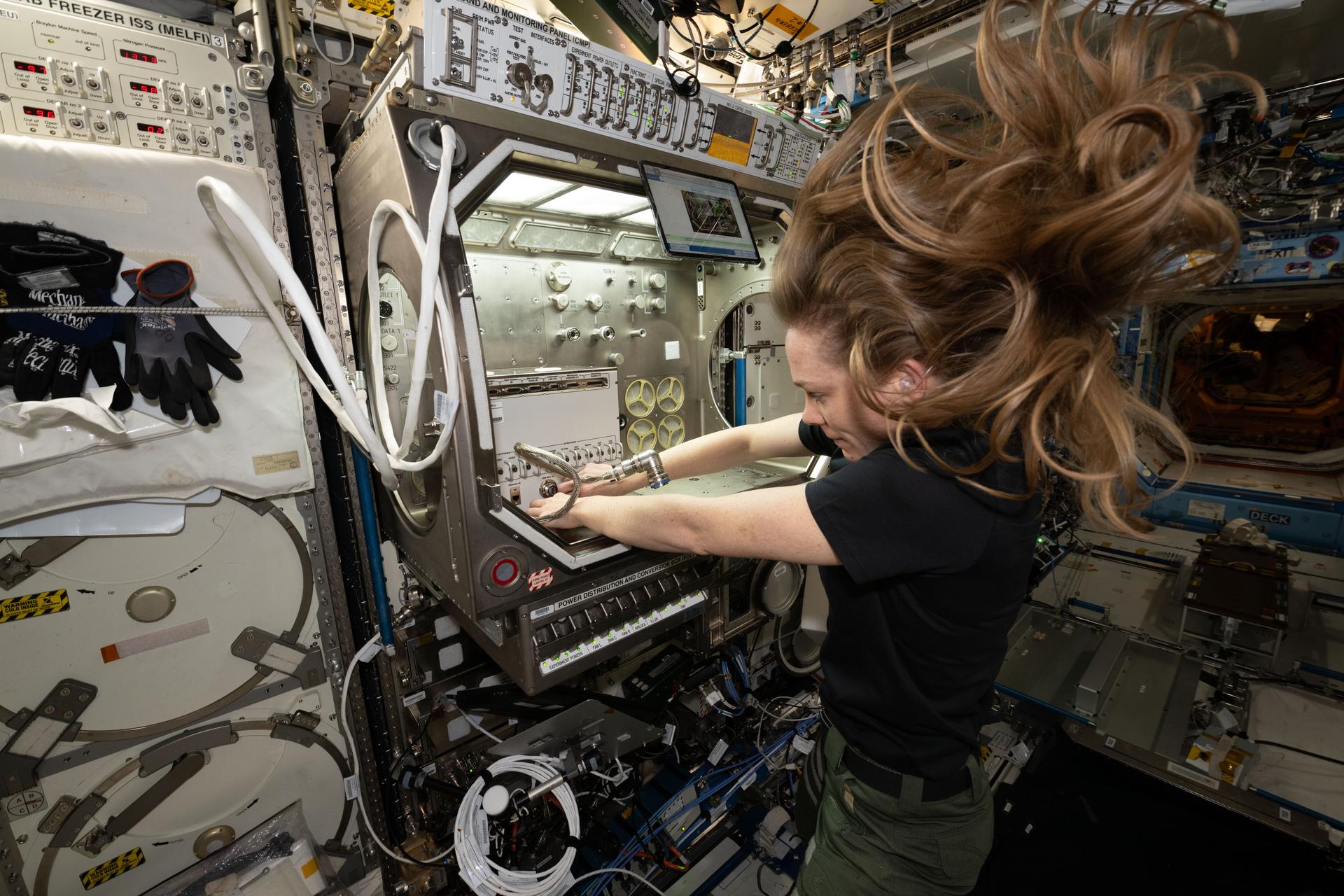
NASA astronaut Nichole Ayers sets up the space station's Ring Sheared Drop device, which uses surface tension to pin a drop of liquid between two rings. The device makes it possible to study liquid proteins without a solid container, eliminating interactions between the solutions and container walls that can affect results. The Ring Sheared Drop-IBP-2 experiment studies the behavior of protein fluids in microgravity and tests predictive computer models. Better models could help advance manufacturing processes in space and on Earth for next-generation medicines to treat cancers and other diseases.
Crystallization research
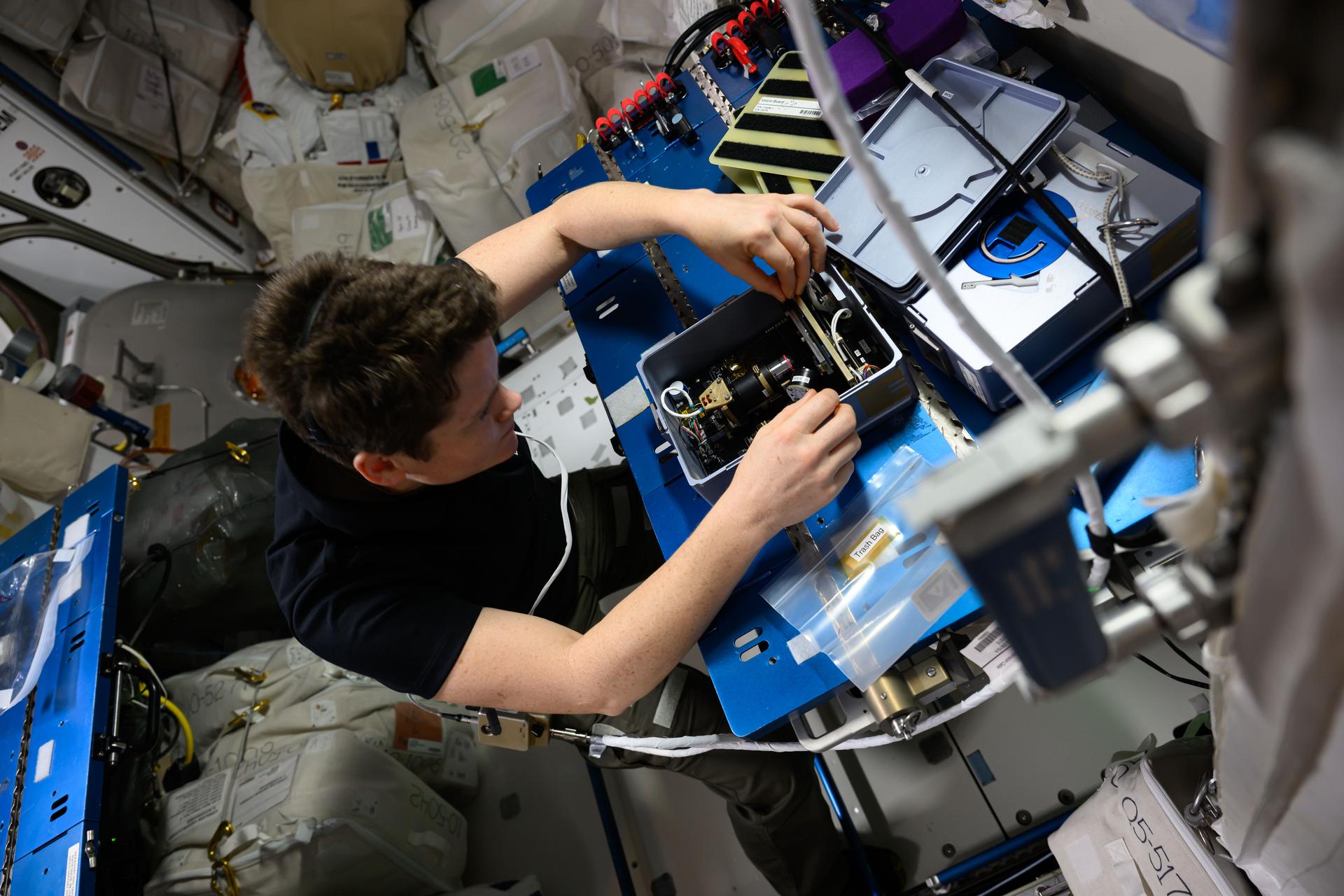
NASA astronaut Anne McClain swaps out hardware in the International Space Station's Advanced Space Experiment Processor-4, which enables physical science and crystallization research. A current investigation uses the processor to demonstrate technology that may be able to produce medications during deep space missions and improve pharmaceutical manufacturing on Earth.
Monitoring astronaut health

NASA astronaut Anne McClain helps JAXA (Japan Aerospace Exploration Agency) astronaut Takuya Onishi collect a sample of his blood. Analysis of blood samples is one tool NASA uses to continuously monitor crew health, including cardiovascular and immune system functions, bone and muscle mass changes, nutritional and metabolic status, and mental well-being. Crew members aboard the International Space Station also participate in various ongoing studies to better understand how different body systems adapt to weightlessness.
Catching a corona
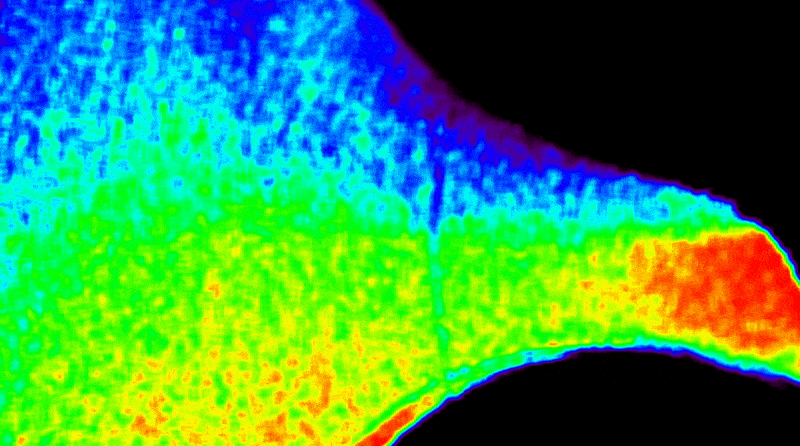
This animated, color-coded heat map shows temperature changes in the Sun's outer atmosphere, or corona, over several days, with red indicating hotter regions and purple showing cooler ones. Scientists can observe these changes thanks to the International Space Station's CODEX, which collected data during the Crew-10 mission. The instrument uses a coronagraph to block out sunlight and reveal details in the Sun's corona. Data from this investigation could help scientists understand the energy source of the solar wind, a flow of charged particles from the Sun that constantly bombards Earth.
Expanding in-space crystallization
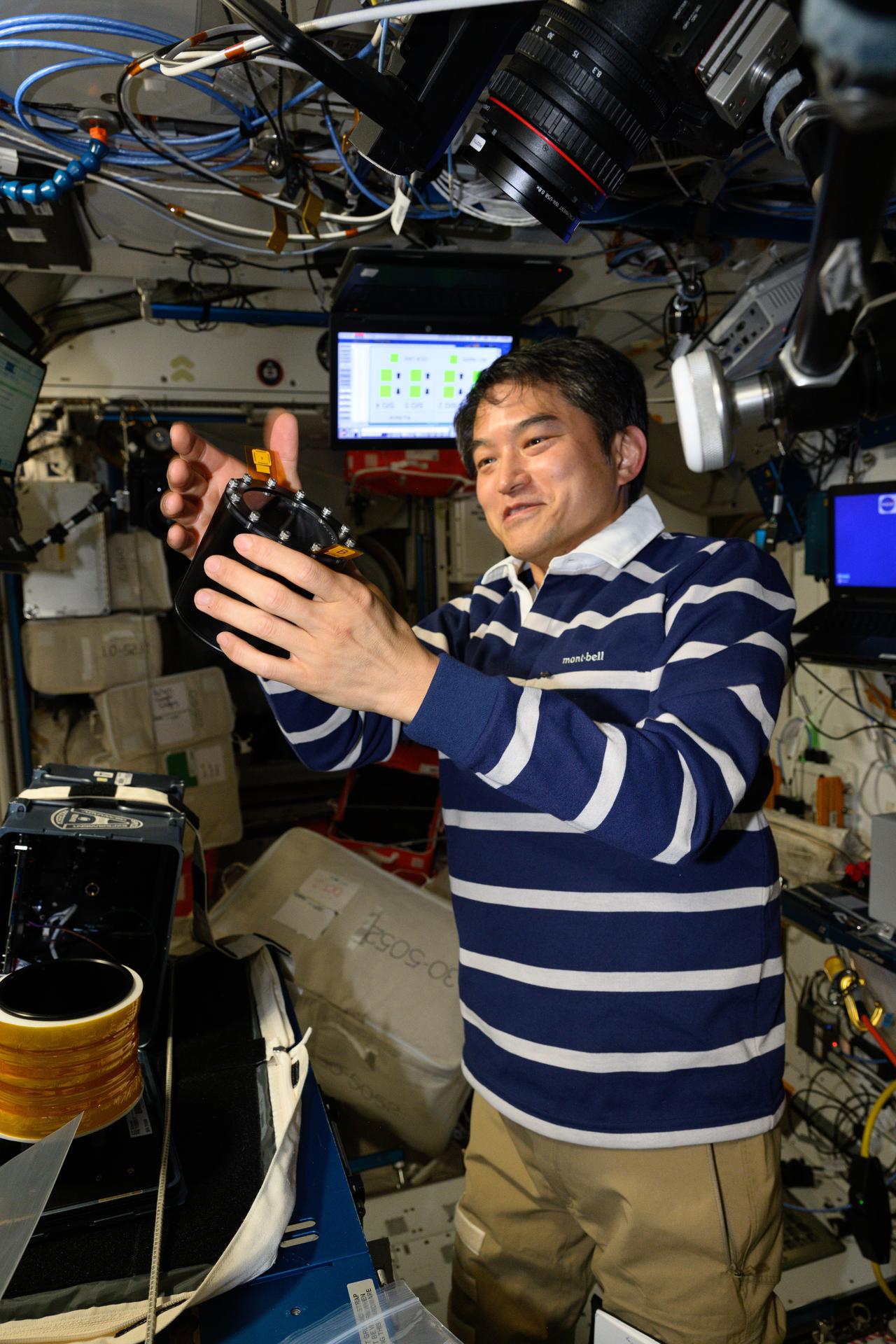
Astronaut Takuya Onishi of JAXA (Japan Aerospace Exploration Agency) services the International Space Station's Advanced Space Experiment Processor-4 in preparation for ADSEP-Industrial Crystallization Cassette. This investigation tests new hardware that scales up research and could enable in-space production of pharmaceuticals and other materials for commercial space applications.
Sowing seeds in space
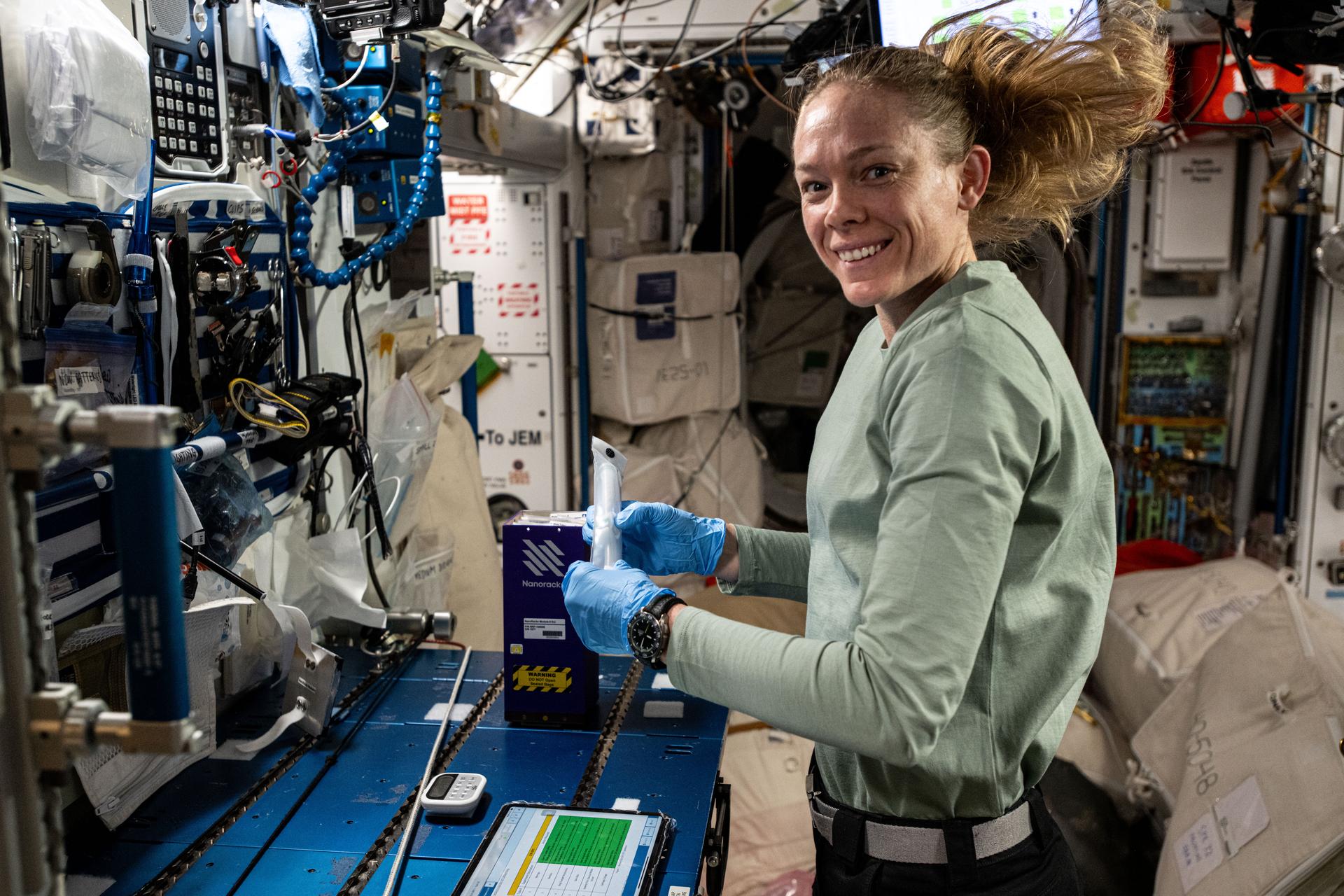
NASA astronaut Nichole Ayers prepares mixture tubes containing samples for Nanoracks Module-9 Swiss Chard. This student-designed experiment examines whether the size, shape, color, and nutritional content of Swiss chard seeds germinated in space differ from those grown on Earth. The International Space Station hosts ongoing plant research as a source of food and other benefits, including contributing to astronaut well-being, for future long-duration missions.
Protecting astronaut vision
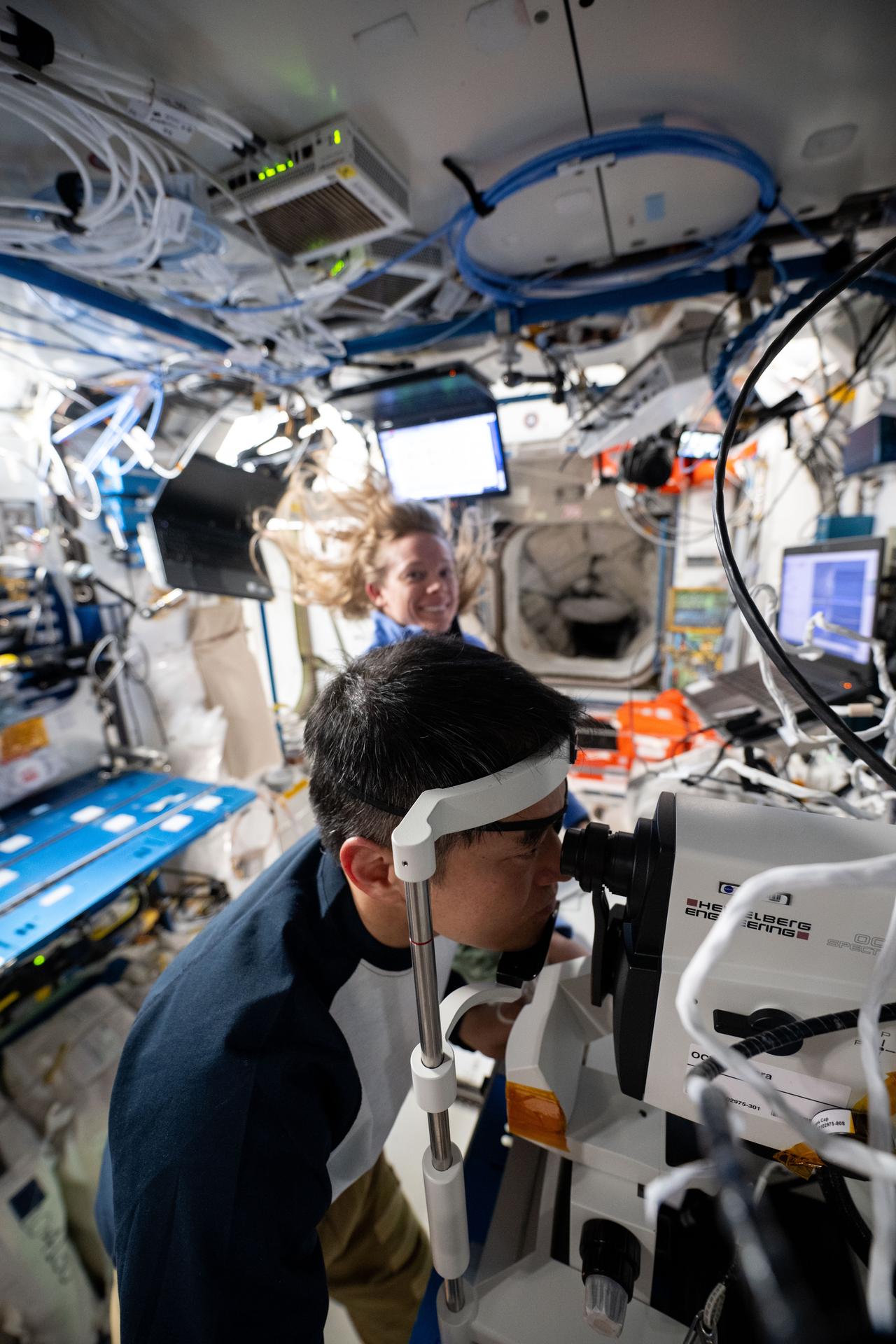
Spaceflight can cause changes to eye structure and vision, so crew members monitor eye health throughout their missions. Astronaut Takuya Onishi of JAXA (Japan Aerospace Exploration Agency), assisted by NASA astronaut Nichole Ayers, conducts an eye exam aboard the International Space Station using optical coherence tomography. This technology uses reflected light to produce 3D images of the retina, nerve fibers, and other eye structures and layers.

